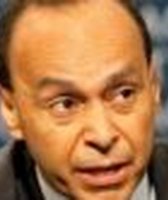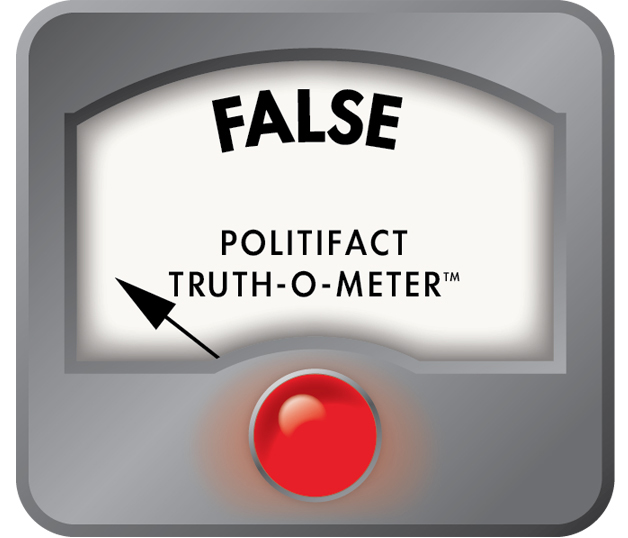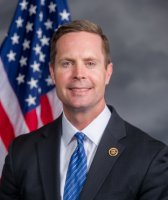Stand up for the facts!
Our only agenda is to publish the truth so you can be an informed participant in democracy.
We need your help.
I would like to contribute
Emanuel wrong again on Chicago jobs
Chicago’s unemployment rate is at its lowest point since the run-up to the Great Recession. And as of this spring, fewer city residents were jobless than at any other time in at least three decades.
So there’s good news on the jobs front that Chicago Mayor Rahm Emanuel could reasonably tout. Instead, he is now clinging to a variation of a boast we rated as False when we first heard him utter it in January.
Back then, he declared Chicago in 2017 enjoyed the "highest employment in the private sector in the history of the city." His revised variation narrows the comparison by more than a century and no longer explicitly confines it to workers in the private sector.
"Chicago is experiencing right now the highest employment since 1950," Emanuel declared recently during a public television interview on WTTW’s "Chicago Tonight" program. A few minutes later in the interview, he repeated the point to underscore how attractive the city has become to employers.
Is Emanuel now on more solid ground with his amended jobs claim than when we checked him early this year? We decided to take a second look.
Sign up for PolitiFact texts
A numbers game
Emanuel didn’t explain the basis for his new claim. We sought clarification from a mayoral spokesman, but he did not provide it.
But, in a nutshell, the answer to our question is no. State and federal headcounters conduct different jobs tallies, but none render numbers that match the superlatives uttered by the mayor either now or in January.
Underlying our skepticism of Emanuel’s initial claim was an obvious demographic reality: Chicago’s population has been shrinking for decades and, at 2.7 million residents, is 900,000 fewer than its 1950 peak recorded by the Census.
Early this year, an Emanuel spokesman said the mayor’s numbers came from an annual report from the Illinois Department of Employment Security. That report does not tally jobs held by Chicago residents, but rather private-sector jobs located in the city held by Chicagoans and suburbanites alike.
For 2017, that report showed 1.18 million private-sector jobs in the city, the highest number reported by the state since 1990 when it recorded 1.2 million private-sector jobs for Chicago. But the report series dates back to the late 1950s, and for most years prior to 1990, the city’s private-sector jobs count far exceeded its 2017 tally.
It is also important to note that state officials say their private-sector jobs report has not been updated since Emanuel spoke last January, so nothing has changed in the intervening months that could make his false claim true based on state figures.
Of course, Emanuel did not limit his WTTW comments to private-sector jobs. But his argument would fall just as flat if he meant to refer to the broader measure of all jobs held by Chicagoans—whether inside city limits or not.
Featured Fact-check
For example, the Bureau of Labor Statistics pegged Chicago’s preliminary employment numbers for May, the most recent available, at 1,286,424. That is up more than 76,000 from May 2010 during the depth of the Great Recession.
But in 2000, BLS numbers for Chicago employment exceeded today’s count by more than 32,000; in 1989 they were more than 60,000 higher; in 1984 more than 103,000 higher; and in 1976 nearly 215,000 greater.
Our ruling
Emanuel said the city is experiencing its "highest employment since 1950," a variation of a claim he made in January about Chicago’s private-sector employment hitting the highest level in city history.
But Chicago has a much smaller population these days than it did in the post-war era, so it stands to reason that jobs numbers would shrink over the decades as well. And they have.
Still, the city’s employment picture these days is indisputably brighter than it was just a few years ago.
Preliminary federal figures for May show city jobless numbers at 48,602, down from nearly 170,000 in 2010. And the state’s private-sector jobs report, which the mayor’s office gestured to last time around, shows improvement as well—even if it doesn’t match the mayor’s rhetoric.
Yet Emanuel continues to dwell on claims of job benchmarks that don’t exist instead of the ones that do. He was wrong the first time we checked him and he is wrong again now. We rate his latest statement False.
Our Sources
Dataset: Local Area Unemployment Statistics (LAUS), U.S. Bureau of Labor Statistics, accessed July 3, 2018
"Chicago’s private-sector employment: Really the highest in city history?," PolitiFact Illinois, Jan. 22, 2018
"Emanuel on Term Limits, Chicago’s Affordable Housing Challenges," WTTW, June 28, 2018
Email interview: Grant Klinzman, spokesman for Mayor Rahm Emanuel, July 2, 2018
Report: Where Workers Work, Illinois Department of Employment Security
Dataset: Private-sector employment (1957-1997), Illinois Department of Employment Security
Email interview: Bob Gough, Illinois Department of Employment Security spokesman, July 2, 2018
Dataset: BLS Historical Monthly Data, Illinois Department of Employment Security, accessed July 2, 2018
Browse the Truth-O-Meter
More by Kiannah Sepeda-Miller
Emanuel wrong again on Chicago jobs
Support independent fact-checking.
Become a member!
In a world of wild talk and fake news, help us stand up for the facts.










 PolitiFact Rating:
PolitiFact Rating: 













































